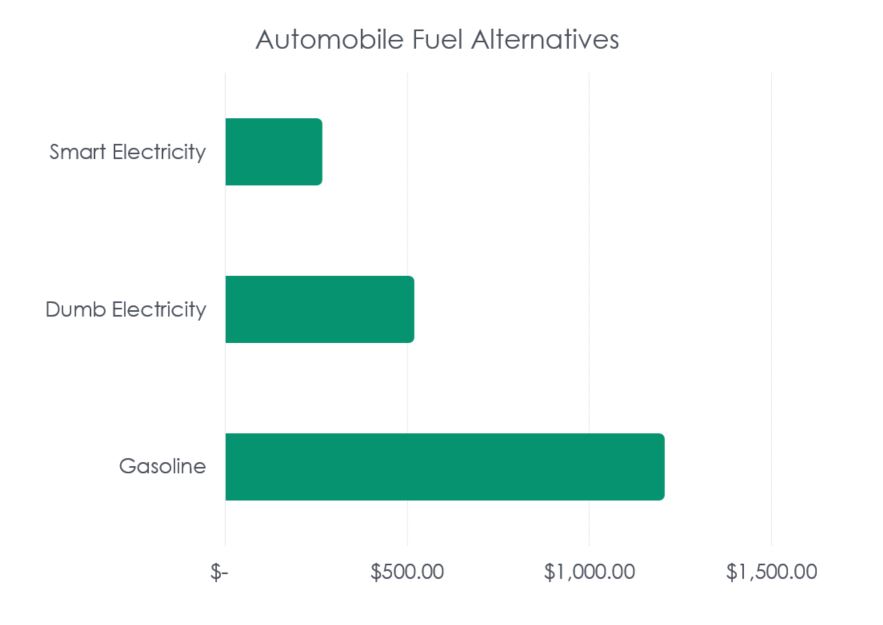
Last week we looked at the value of advanced metering infrastructure made possible by interval meter readings at least every hour. This opens the door to many forms of demand response, including time-of-use rates, demand rates, and interruptible rates. These three can be summarized using airlines as an example:
- Time-of-use rates: it is very costly to book the first flight Monday morning to Los Angeles, as I just learned. The reason – business people don’t want to leave Sunday night, and they can have some part of their work day remaining after spending three hours in the air and another three hours in traffic getting to their destination.
- Demand rates: if you require half a cargo container of luggage for a few days away, you are going to pay extra because you are displacing cargo. It’s a congestion, or load thing. You are charged for the load, but at least you don’t have to board a bathroom scale, yet.
- Interruptible rates: Airlines routinely overbook and ask for volunteers to hang around for another flight in exchange for cash or valuable prizes. I’d like to see a live auction with an auctioneer for this. We could do these for demand response via web-conference calls.
Beneficial Electrification and Fuel Optimization
The term, beneficial electrification, applies to switching from fossil fuels, mainly petroleum based fuels, to electricity – transportation, commercial and residential space heating, water heating, and many industrial processes. The term also applies to environmental benefits of reduced emissions, especially particulates in urban areas that make health issues like asthma worse.
Fuel optimization is slightly different. I discussed this some in Motivating Efficiency and Incinerating Obstinance. Fuel optimization is simply about choosing the lowest-cost fuel, electricity, or natural gas for the job.
Electrification does not require advanced metering infrastructure, but AMI certainly helps. Why? Because as described above, AMI allows for time-of-use and demand rates, which can easily cut electricity cost in half for electrification loads.
The chart nearby shows estimated annual fuel costs to drive comparable compact Nissan cars – one being the electrically propelled Leaf and the other, a gasoline fired Versa. Smart electricity comes from a utility with AMI, including smart meters, which enable time-of-use or demand rates.
Dumb electricity is what I think most residential customers still have in the U.S. That is, you pay one rate whether it is 5:00 PM on a scorching hot Tuesday afternoon, or 4:00 AM on a cool 50 degree Sunday morning. In case you haven’t guessed, electricity costs a lot more on the scorching hot Tuesday afternoon. Buy low. Sell high.
AMI and other enabling technologies, like smart chargers, allow electric customers to have access to electricity that is cheap for one of two reasons, or both.

The first is that it allows off-peak charging, after most everyone, except for night-shift workers and night owls, have gone to bed.
The second is it allows for a big electrical sponge to soak up excess power generated by renewable resources, including both sun and wind.
The benefit for utilities, other than plain old load growth, is it allows for more sales during otherwise slack periods. Texas and Iowa already experience periods of negative electricity prices, “requiring” wind farm owners to sell at a loss to collect their federal tax credits and still come out in the black. Wouldn’t it be great if McDonald’s reported, “we just killed a cow; we will pay you to get rid of some hamburgers, and there were no lines!” Some foodie snobs would claim to need to be paid to eat one anyway. Not me! It’s like a hot dog at a baseball game! Yeah!
AMI is a Waste of Ratepayer Money?
Every so often a durable, great technology comes along and customers or consumers purchase that technology. Then a few years hence, another game changer comes along. This was the case with AMR, or automated meter reading systems. AMR provides only a small fraction of the benefits of AMI. As the name implies, AMR allows for meter reading without folks out walking around getting meter readings. This reminds me, when I was a kid on the farm, I ran around and read the meters for our REC. Water utilities have also recently switched to AMR.
However, per my reads here and here, AMR is not capable of interval metering. Interval readings are time-stamped power and usage readings that occur no less frequently than hourly. Therefore, AMI, which includes interval data collection, enables time-of-use and demand rates.
So this brings me back to last week when I wrote that some utilities think AMI is a waste of ratepayer money. Wow. Furthermore, I know of at least two utility signatories in this letter wanting congress to put its elbow on the scale for electric vehicles, that are on the “waste of money” side of the tracks.
And cars are just one example. The same would apply to space heating and other electrification opportunities. Some of it is more emotional than pure dollars. For instance, doesn’t a quarter of the energy cost sound better than half the energy cost?
You could say, AMI and electrification go together like Forrest and Jenny or peas and carrots. That’s all I have to say about that.





